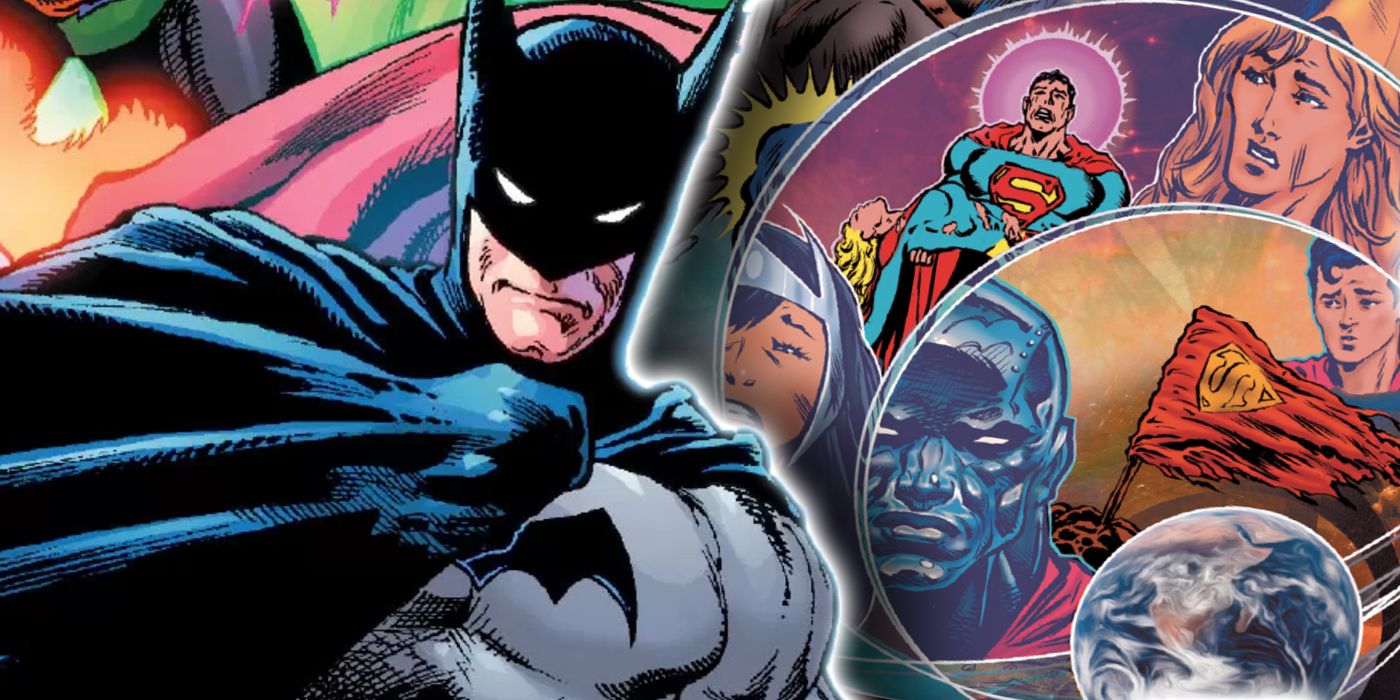In Generations: Forged one-shot, Batman just learned the real secret of eternal youth in the DC Universe, and it doesn’t involve a Lazarus Pit.
WARNING: The following contains spoilers for Generations: Forged #1, by Dan Jurgens, Robert Venditti, Andy Schmidt, Mike Perkins, Marco Santucci, Paul Pelletier, Norm Rapmund, Bernard Chang, Joe Prado, Colleen Doran, Bryan Hitch, Andrew Currie, Kevin Nowlan, Hi-Fi and Tom Napolitano, on sale now.
The DC Universe is one of the most complex realms within pop culture. With multiple crises, reboots and retcons, it’s not easy figuring out DC’s decades of continuity. However, Batman just unveiled the oldest truth of the DC Universe.
The Dark Knight’s discovery takes place in the final pages of Generations: Forged #1, by Dan Jurgens, Robert Venditti, Andy Schmidt and Kevin Nowlan. At the end of this monumental issue, the heroes from across time and space have fixed the DC timeline. With everyone returning to their ordinary time periods, Waverider, the time-traveler who assembled them, takes a moment to say that they’re from “the most unique of universes, where time passes a bit differently.”
As Waverider explains it, people also age “differently and almost imperceptibly.” When the two of them are alone, a young Batman questions Waverider about his previous comments. Waverider clarifies by calling this universe the “Linearverse,” where people age at a slower rate and live longer than most. The people of the DC Universe stay young for decades, allowing its heroes to be in fighting shape for a very, very long time.
Related: Batman: Future State May Have Given One Villain His Ultimate Revenge
This comment explains a lot about time in the DC Universe, especially as it pertains to characters like Batman. The Caped Crusader has been around since 1939, a date explicitly called out in this story. Despite that, today’s modern Batman isn’t much older now than he was over 80 years ago.
Naturally, real-world readers have been willing to suspend their disbelief for something like this, an effort that’s been aided by the occasional continuity reboot that resets heroes at a younger age. While characters do grow and mature over time — just as Bruce Wayne had a son, Damian — this keeps every decade of DC heroes around the same age, infinitely expanding their lifespans and the peak of their powers.
While iconic characters like Green Lantern or the Flash maintain a similar age and exist in perpetuity, the Linearverse concept provides a textual, in-universe reason for these heroes’ eternal youth. Over 80 years, Batman has faced enemies like the Joker so often that trying to place these many adventures in a timeframe of five or 10 years simply wouldn’t make much sense, especially in a post-Dark Nights: Death Metal context where every story counts.
Related: Shazam: DC’s Most Powerful God Died – and a DCEU Hero Is the Killer
While adult characters like Batman tend to stay the same, it’s interesting to note how younger characters do age, but only to a point. For example, Dick Grayson has gone from a child to a teenager to an adult over the course of 80 years. Once he reached young adulthood, however, Dick essentially remained where he was.
Taking the Linearverse idea into account, aging does occur, but very slowly and only to a point. Characters like Dick tend to take a decade or so to grow a few years, and by the time they reach adulthood, tend to stay there.
Although DC’s heroes have lived for decades, they have experienced the same milestones as real people.
For instance, Dick Grayson may have existed for 80 years, but he’s still gone through childhood, adolescence and young adulthood like anyone else. The only real difference is that Nightwing has technically existed for 80 years, but he’s only aged until about his mid-20s.
If Batman has lived through 80 years of crime-fighting, his story might lose some of its relative realism. However, it doesn’t negate the fact that Batman does get old, he just does so slowly enough to make the futuristic worlds of Batman Beyond and Dark Knight Returns seem like a realistic part of his lifespan.
Whether characters age as imperceptibly as Batman or as explicitly as Dick Grayson, the Linearverse gives the DC Universe a way to explain why its heroes can be so timeless to generations of fans.
KEEP READING: Dark Nights: Death Metal – How to Read the DC Universe Saga and Where to Start
About The Author
